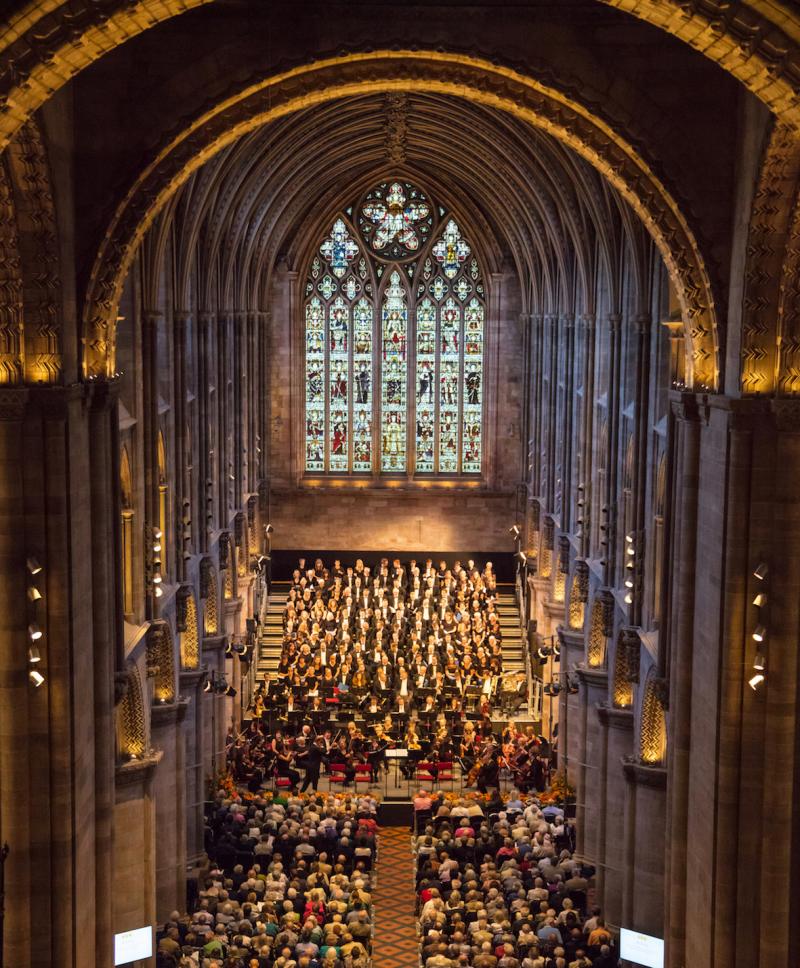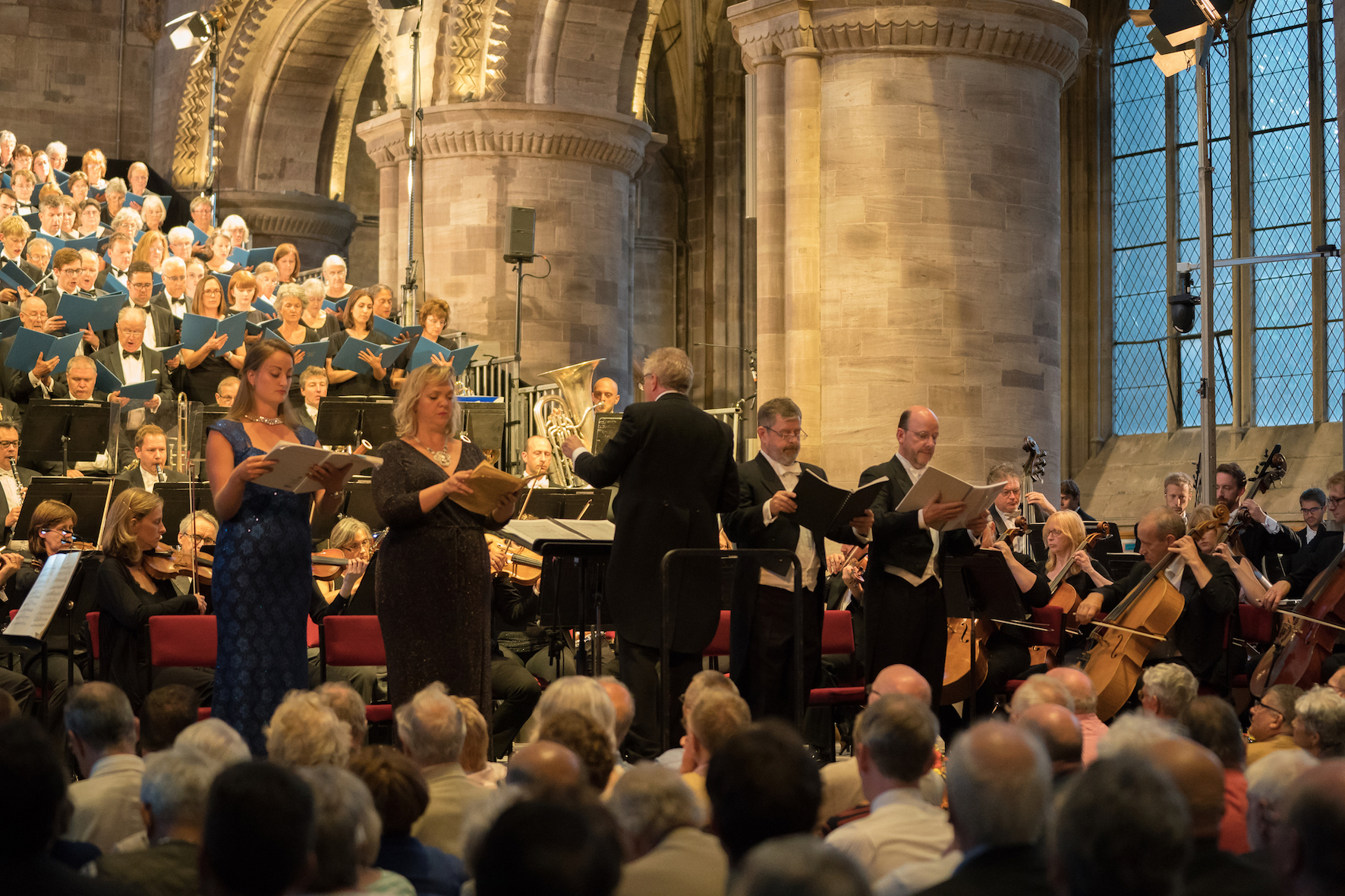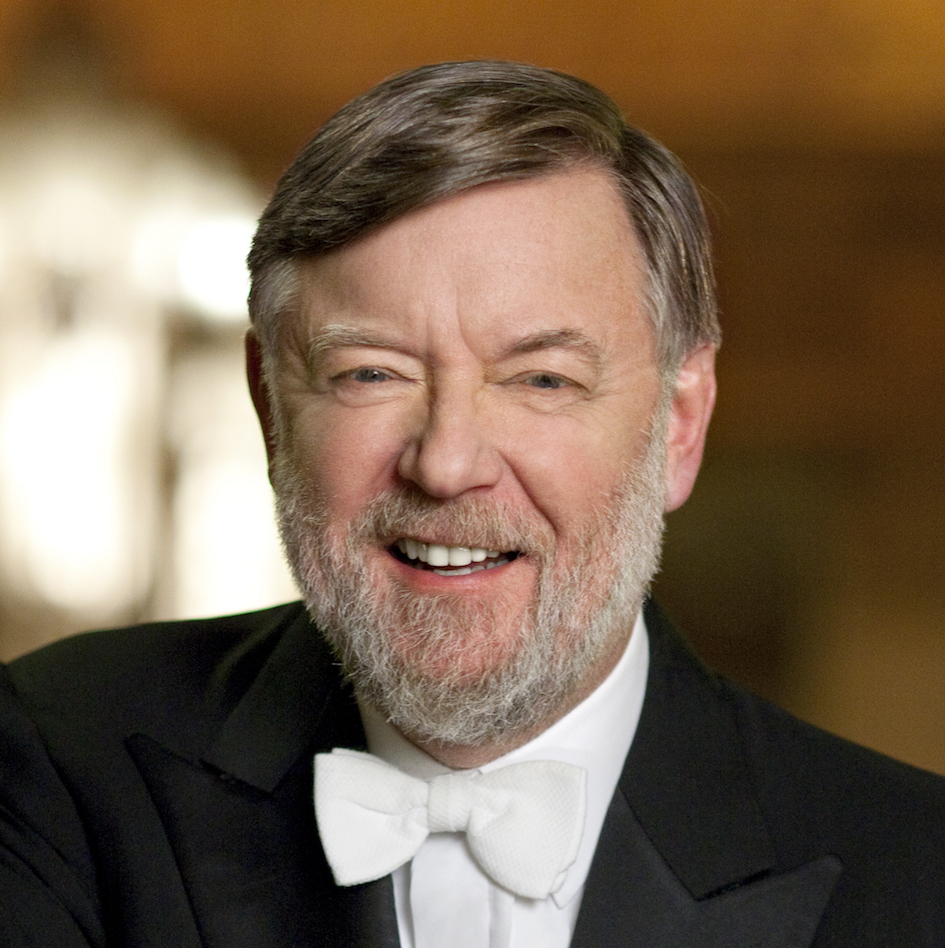theartsdesk at the Three Choirs Festival - religion, passion and Nordic fakery | reviews, news & interviews
theartsdesk at the Three Choirs Festival - religion, passion and Nordic fakery
theartsdesk at the Three Choirs Festival - religion, passion and Nordic fakery
The world's oldest music festival makes a pair of important choral finds

Not to be outdone by the Proms, the 2018 Three Choirs Festival in Hereford burst into action on Saturday with a major choral work, the Mass in D, by music’s most famous suffragette, the majestic figure of Dame Ethel Smyth.
She was also in love with the much younger Virginia Woolf, who wrote that it was like being caught by a giant crab. She was a close friend (though presumably not lover) of the Empress Eugénie, and it was Eugénie who pushed through the first performance of her Mass in the Albert Hall in 1893.
This creaking tale, told by Longfellow in sub-Hiawathan doggerel, is probably why the piece has been consigned to the well-stocked dustbin of pre-'Enigma' Elgar
The ironies don’t end there. The Mass was inspired by and dedicated to another of Smyth’s crushes, a certain Pauline Trevelyan, a devout Catholic who seems to have induced some parallel (if temporary) sentiment in her composer lover – I’m pinching here from Peter Avis’s entertaining and informative programme note. There is, though, nothing sentimental about the Mass itself. This is a big, hour-long work of real power that makes nonsense of the mildly ludicrous image of its composer as a stately icon of female creative amateurishness. Hearing it straight after John Ireland’s tediously conventional cantata, These Things Shall Be, I found it refreshingly original in language and solid in technique, overlong possibly, but intriguingly complex and ambitious, and by no means easy on the Festival Chorus, who performed it heroically under the festival’s artistic director, Geraint Bowen.
Smyth had studied in Leipzig and knew Brahms, Tchaikovsky and Grieg, but her Mass seems to owe more than anything – in general treatment, if not style – to the Beethoven of the Choral Symphony and the Missa Solemnis. It alternates ceremonious unison and block chordal writing with intricate excursions into imitative counterpoint, with often surprising and affecting harmonic results. It sectionalises the text along dramatic lines, much like Beethoven, and even emulates him here and there, for instance in the mysterious polyphony of the Crucifixus, the slow, quiet opening of the Sanctus, and the beatific setting of the Benedictus, in her case for women’s voices, starting on a highly unexpected seventh chord that somehow typifies her unorthodox way with textbook harmony. This is a tricky work for an amateur choral society, but it justifies the effort involved, and makes a fine change from the endless Gerontiuses and Elijahs and Creations. Of course Smyth was a competent composer; why would one doubt it? But the Mass shows that she could also master elevated style, just as her opera The Wreckers, which I saw once, proves that she understood the theatre and was no dunce when it came to post-Wagnerian music drama. I can’t say this performance was completely on top of the work’s difficulties, even with the support of the Philharmonia Orchestra and a solid solo quartet (Eleanor Dennis, Madelaine Shaw, Paul Nilon, Neal Davies). But it was a timely kick in the shin.
This is a tricky work for an amateur choral society, but it justifies the effort involved, and makes a fine change from the endless Gerontiuses and Elijahs and Creations. Of course Smyth was a competent composer; why would one doubt it? But the Mass shows that she could also master elevated style, just as her opera The Wreckers, which I saw once, proves that she understood the theatre and was no dunce when it came to post-Wagnerian music drama. I can’t say this performance was completely on top of the work’s difficulties, even with the support of the Philharmonia Orchestra and a solid solo quartet (Eleanor Dennis, Madelaine Shaw, Paul Nilon, Neal Davies). But it was a timely kick in the shin.
The same goes, at least double (both shins), for Elgar’s King Olaf, one of the big choral works he composed, also in the 1890s, just before his great breakthrough masterpiece, the Enigma Variations, and which Sir Andrew Davis conducted brilliantly with the same hard-worked Festival Chorus in the cathedral two days later. Smyth, in 1893, was (probably) an agnostic diverted into religion by sexual love. Elgar, in 1896, was a cradle Catholic who, for some reason, decided to set a fake Longfellow saga about a Christian Viking monarch who sets out to convert a sequence of pagan chiefs by the sword and perishes, as Jesus tells us will always happen, by the same means.
 This creaking tale, told by Longfellow in sub-Hiawathan doggerel, is probably why the piece has been consigned to the well-stocked dustbin of pre-Enigma Elgar. Certainly it’s not because of the quality of the music, which is consistently superb, finely written for the voices, marvellously orchestrated, and beautifully composed, on a level of métier and inspiration not much below that of the works that made him famous. It’s true that the piece is more pictorial than dramatic. Elgar seems to have seen his narrative works as sets of images rather than as plays, the pacing of King Olaf is symphonic, and its form episodic. It would hardly made good theatre. Yet who’s grumbling, with music of such energy and vividness, mature in style, and without even the flat patches that mar his next choral work, Caractacus.
This creaking tale, told by Longfellow in sub-Hiawathan doggerel, is probably why the piece has been consigned to the well-stocked dustbin of pre-Enigma Elgar. Certainly it’s not because of the quality of the music, which is consistently superb, finely written for the voices, marvellously orchestrated, and beautifully composed, on a level of métier and inspiration not much below that of the works that made him famous. It’s true that the piece is more pictorial than dramatic. Elgar seems to have seen his narrative works as sets of images rather than as plays, the pacing of King Olaf is symphonic, and its form episodic. It would hardly made good theatre. Yet who’s grumbling, with music of such energy and vividness, mature in style, and without even the flat patches that mar his next choral work, Caractacus.
Davis (pictured above by Dario Acosta) threw himself into this unknown masterpiece with the assurance of a conductor on top of his game; and he took the singers and orchestra with him. The chorus, frankly, was transformed from the somewhat workaday unit of the Smyth Mass. They sang with excitement and precision, ending with an immaculate account of the work’s one well-known movement, the unaccompanied, and therefore challenging, “As torrents in summer”. And the solo trio was strong: Andrew Staples especially convincing as the idealistic, overwrought Olaf, but David Shipley and Judith Howarth also excellent as the assorted chiefs and would-be wives whose murderous intentions he manages to thwart until the penultimate chorus.
Not surprisingly, the Philharmonia Orchestra relished Elgar’s apparently spontaneous command of that difficult art that some composers never get quite right even after years of experience and study. Maybe Elgar, a quick learner, picked it up playing violin in Three Choirs Festival orchestras. You can learn a lot in far-off cathedrals.
rating
Share this article
Add comment
The future of Arts Journalism
You can stop theartsdesk.com closing!
We urgently need financing to survive. Our fundraising drive has thus far raised £49,000 but we need to reach £100,000 or we will be forced to close. Please contribute here: https://gofund.me/c3f6033d
And if you can forward this information to anyone who might assist, we’d be grateful.

Subscribe to theartsdesk.com
Thank you for continuing to read our work on theartsdesk.com. For unlimited access to every article in its entirety, including our archive of more than 15,000 pieces, we're asking for £5 per month or £40 per year. We feel it's a very good deal, and hope you do too.
To take a subscription now simply click here.
And if you're looking for that extra gift for a friend or family member, why not treat them to a theartsdesk.com gift subscription?
more Classical music
 Two-Piano Gala, Kings Place review - shining constellations
London Piano Festival curators and illustrious friends entertain and enlighten
Two-Piano Gala, Kings Place review - shining constellations
London Piano Festival curators and illustrious friends entertain and enlighten
 Echo Vocal Ensemble, Latto, Union Chapel review - eclectic choral programme garlanded with dance
Beautiful singing at the heart of an imaginative and stylistically varied concert
Echo Vocal Ensemble, Latto, Union Chapel review - eclectic choral programme garlanded with dance
Beautiful singing at the heart of an imaginative and stylistically varied concert
 Scott, Irish Baroque Orchestra, Whelan, RIAM, Dublin review - towards a Mozart masterpiece
Characteristic joy and enlightenment from this team, but a valveless horn brings problems
Scott, Irish Baroque Orchestra, Whelan, RIAM, Dublin review - towards a Mozart masterpiece
Characteristic joy and enlightenment from this team, but a valveless horn brings problems
 Classical CDs: Voice flutes, flugelhorns and froth
Baroque sonatas, English orchestral music and an emotionally-charged vocal recital
Classical CDs: Voice flutes, flugelhorns and froth
Baroque sonatas, English orchestral music and an emotionally-charged vocal recital
 Kanneh-Mason, Britten Sinfonia, Shave, Milton Court - a grin and a big beaming smile
A pair of striking contemporary pieces alongside two old favourites
Kanneh-Mason, Britten Sinfonia, Shave, Milton Court - a grin and a big beaming smile
A pair of striking contemporary pieces alongside two old favourites
 theartsdesk at the New Ross Piano Festival - Finghin Collins’ musical rainbow
From revelatory Bach played with astounding maturity by a 22 year old to four-hand jazz
theartsdesk at the New Ross Piano Festival - Finghin Collins’ musical rainbow
From revelatory Bach played with astounding maturity by a 22 year old to four-hand jazz
 First Person: Manchester Camerata's Head of Artistic Planning Clara Marshall Cawley on questioning the status quo
Five days of free events with all sorts of audiences around Manchester starts tomorrow
First Person: Manchester Camerata's Head of Artistic Planning Clara Marshall Cawley on questioning the status quo
Five days of free events with all sorts of audiences around Manchester starts tomorrow
 Goldscheider, Brother Tree Sound, Kings Place review - music of hope from a young composer
Unusual combination of horn, strings and electronics makes for some intriguing listening
Goldscheider, Brother Tree Sound, Kings Place review - music of hope from a young composer
Unusual combination of horn, strings and electronics makes for some intriguing listening
 theartsdesk Q&A: composer Donghoon Shin on his new concerto for pianist Seong-Jin Cho
Classical music makes its debut at London's K-Music Festival
theartsdesk Q&A: composer Donghoon Shin on his new concerto for pianist Seong-Jin Cho
Classical music makes its debut at London's K-Music Festival
 Helleur-Simcock, Hallé, Wong, Bridgewater Hall, Manchester review - moving lyricism in Elgar’s concerto
Season opener brings lyrical beauty, crisp confidence and a proper Romantic wallow
Helleur-Simcock, Hallé, Wong, Bridgewater Hall, Manchester review - moving lyricism in Elgar’s concerto
Season opener brings lyrical beauty, crisp confidence and a proper Romantic wallow

Comments
What a great aerial photo of